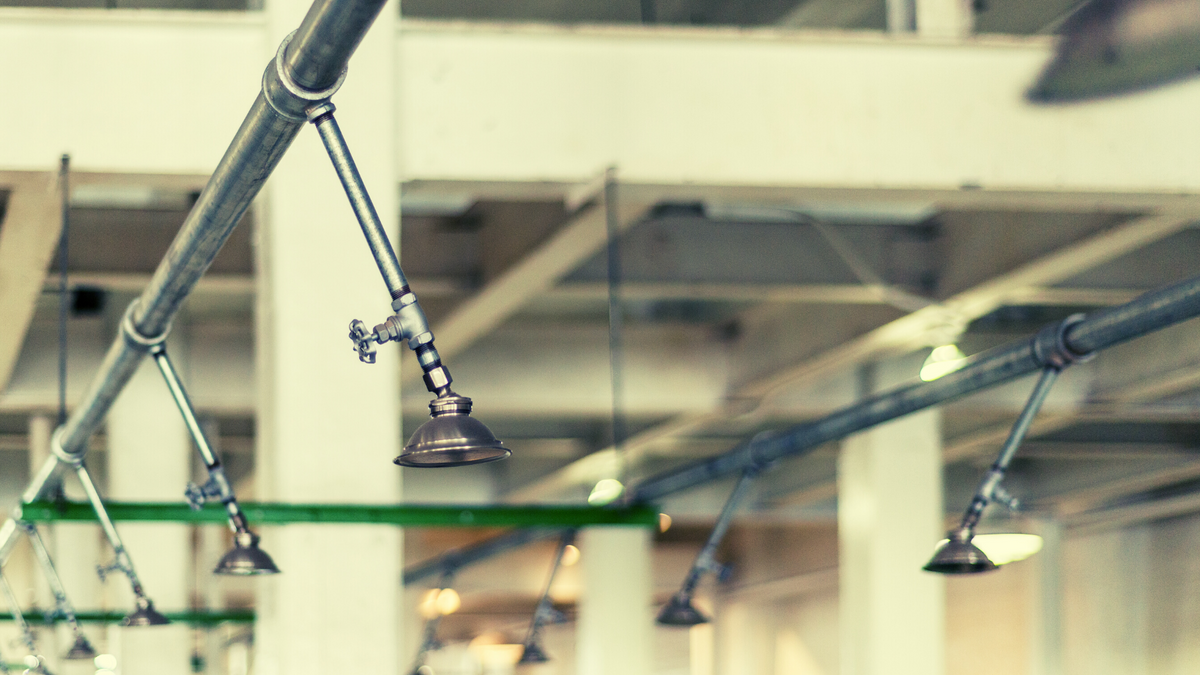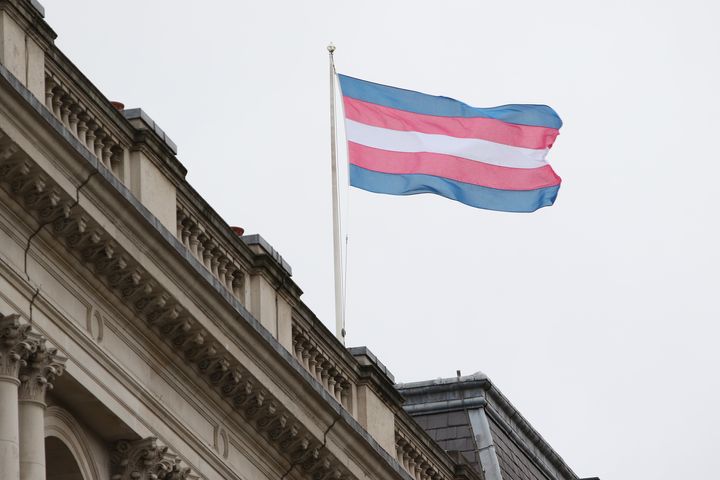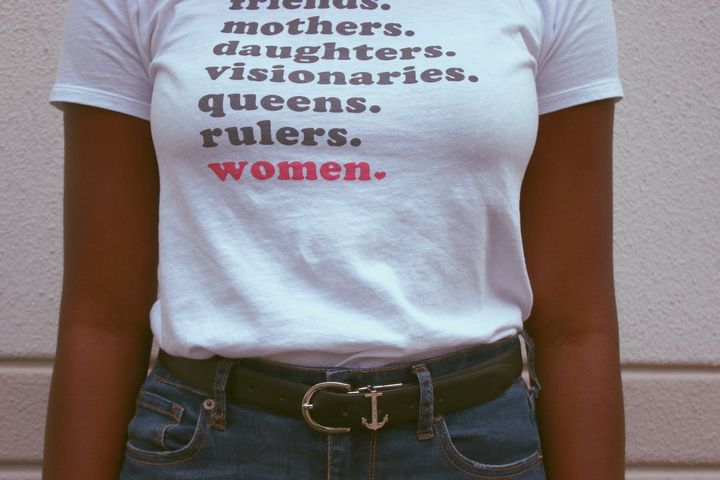Female Prisoners in UK Forced to Shower with Intact Males
Three women speak out on inhumane conditions, harassment, and censorship inside UK women's prisons under new gender-identity policies

Several women have been housed with men in female prisons since government authorities have adopted policies based on self-declared gender identities. 4W spoke to three formerly incarcerated women who report censorship, intimidation, and retaliation inside UK women's facilities that now house men alongside female inmates.
On April 13, NJ News reported that at least two women became impregnated by men incarcerated in Edna Mahan Correctional Facility, the only female-only prison in the state of New Jersey. The men were placed there because they claimed to have a female gender identity.
The story was quickly picked up by several mainstream media outlets around the world. The Daily Mail reported that American Civil Liberties Union (ACLU), once a respected human rights advocacy group, “managed” to house at least 27 people at the women's prison, many of them men. The ACLU fought a long legal battle to transfer men to Edna Mahan and the prison, which started accepting male inmates in 2021.
Since then, the female inmates have complained of harassment from the male prisoners who say they are "transgender," with at least two women filling a lawsuit against the correctional facility.
In the UK, similar policies put in place have been long in the public eye, especially after a male prisoner, who called himself Karen White, was transferred back to the male estate after sexually harassing four women in prison. Since then, several other cases of abuse, intimidation, and harassment by men in female prisons have emerged, even though many of the incarcerated women and women who have left prison are left scared, scarred, and silenced by authorities.
4W spoke to three women previously housed with these men, "Linda," "Annie," and "Cathy" (all names changed to protect their privacy and safety. Some of these stories, as well as those from other female former offenders, have been previously published on Keep Prisons Single-Sex's website).
On her second day in a English prison, Linda was having a private conversation with her cellmate, an Eastern European woman, “C,” who is a survivor of trafficking. They were talking about a transgender prisoner, who C said “looked like a man.” Linda confirmed that that individual was male.
Just as she was explaining the policies that allow men to be housed in female prisons to C, a prison guard came up to them. The officer told Linda and C that their “attitude” was “hateful and transphobic” and it would not be tolerated, as it was “against the rules.” According to Linda, C was “visibly upset” with the man’s presence in the female prison and the policies that put him there. Another woman joined them to voice her discomfort about the male transgender prisoner, and, after that, the officer spoke to Linda and C in private, in their shared cell.
“We were basically warned that this hateful behavior was against some rule and we were at risk of adjudication if it persisted.”
“We were basically warned that this hateful behavior was against some rule and we were at risk of adjudication if it persisted,” Linda told 4W. “How is a private conversation between two women about a man hateful!?” She says that she stood her ground with the officer, opposing the rule that houses men, and the incident has been written on her file about “behavior” and “interactions”. Linda believes that this was an intimidation tactic to silence her. “It can be used against you,” she said. “Not once did this officer take into account two women with our own past traumas, and how things affect us.”
Annie was incarcerated in an Scottish prison for seven weeks. “To be taken to prison is frightening, it's traumatic and it's highly dangerous,” she told 4W. She says that she was already terrified, disorientated, embarrassed, and missing her children when she realized that she was going to be housed with two men in the same building. “I thought I might actually pass out!”, she recounted.
“I felt the color drain from my face and my heart began to pump at a higher rate than it already was, my knees began to feel weak and the tidal wave of panic crashed over me. I was having a full-blown panic attack!”
Annie said that she was on a mission to “keep her head down” to finish her remand and go back to her children, but she found it impossible to lie as she was told to. She says that one of the men was “over 6ft and very heavy,” wore male clothing, had a male voice, no gender recognition certificate, and was in prison for domestic violence against a female partner. After being forced to use female pronouns and call him by a female name, Annie says she was “frozen to the spot,” hyperventilating.
“How is it possible that in a female prison, I would need to worry about being attacked and/or raped by a man? A man who has committed violence against women. Violence serious enough to land this man in prison,” she asked.
“How is it possible that in a female prison, I would need to worry about being attacked and/or raped by a man?”
Later on, Annie found out that the second man in the female prison was convicted of murder. Neither man was in any kind of transition process, and had fully intact male bodies, according to her. And yet, she says, “women who are traumatized and vulnerable are having to be naked and shower with men in their spaces, and some decided not to shower at all,” as prison cells don’t have showers - the women share a communal facility for that.
Afraid of rape, Annie asked a prison doctor for a contraceptive coil, something she never wanted or needed before.
“Soon, I need to make another appointment to have this device removed, which fills me with dread due to being a rape and sexual assault survivor. I can't believe I have to go through this again, four years after leaving prison, it almost feels like another violation on my body that I didn’t want, and as usual it stems from men.”
“I didn’t want to see men there but I did. I didn’t want to share showers with men but I was forced to. I didn’t want to see men prance about naked in my shower area yet there they were doing just that,” Annie said. “There is no escaping these men from morning until night and unless women refuse to work and remain in their cells they can't be safe.”
Annie also recounted that, while waiting to see her children, she was locked in a holding cell with one of the men with no prison officer. She said that female prisoners can’t challenge the policies, or they will be punished. “A woman can be charged, a woman can be written up which affects too many things to mention. She can have privileges withdrawn. She can be locked in her cell for longer than the usual 23 hours. She can have visitation removed.”
“Since when did rapists and murderers and men who assault women and children become the most ‘vulnerable?’”
Another matter, according to Annie, is the impact on some of the most vulnerable women in the country, who might be sent to a different prison, “literally evicted for using the wrong pronoun (well the correct pronoun), miles away from their families because there are so few women's prisons in the UK.”
“Since when did rapists and murderers and men who assault women and children become the most ‘vulnerable?’ Ah, yes, since they began changing their pronouns.”
“What the legislators are doing is taking one set of ‘vulnerable’ men and housing them in with extremely vulnerable women, some of the most vulnerable women in society,” says Annie. “These men have committed crimes such as rape, murder, pedophilia, domestic violence, sexual assault, and many more and yet these 'vulnerable' men are locked up with women. Women are not human shields!”
Cathy, the third woman to speak out, says that women are already in a very vulnerable position while in prison. She was incarcerated for 13 years and spent time in several facilities, where she was sexually abused by two male officers in one of them.
Cathy says that “there should be no males at all in a women’s prison and this includes officers as they are also predators.” She was housed in multiple different prisons, and says that women across many facilities tried to avoid interacting with these men because they show clear “male pattern behavior.” However, the female inmates often face retaliation for this.
In one instance, Cathy says a male prisoner reported her to prison staff for “abusing” him, and they both ended up in mediation. After confirming with the male prisoner that his allegations were false, he told her that he reported her because she didn’t want “anything to do with him” and because “he could.”
Women’s groups challenging self-id in prisons
Government authorities seem to be dismissive of the issues affecting female prisoners. Keep Prisons Single-Sex (KPSS), is in contact with women in prison in England who “report the harassment, intimidation and sexual threats” by men claiming a female gender identity. Their website has several other statements from current and former female offenders, as well statements from justice professionals in the Case Studies section.
“These prisoners housed in the female estate include those convicted of the most serious sexual and violent offenses and those with intact and fully functioning male genitalia,” said Kate Coleman of KPSS. “Women report that officers are reluctant to offer assistance for fear of being accused of transphobia and even that violent incidents have been 'hushed up'.”
“Sending violent males to women’s prisons because they claim to be women is not a new policy,” said Patricia, a former prison governor who also have spoken previously with KPSS (her last name has been withheld to protect her safety). She told 4W that she has dealt with two such prisoners, “even before the introduction of the Gender Recognition Act 2004.” "Carla" had surgery and was not a sexual predator but he was violent, and a judge decided that he should be placed in a women's prison, while "Fifi" was a 55 year old male who "dressed as a little girl" and displayed "bouts of violent behavior," but was "very keen to spend time 'with the other girls,'" according to Patricia.
One case was enough to start sending men to women's prison, said the former prison governor. Feminist campaigner Tish reported on her blog, Gender Critical Woman, that there was a male sentenced to life after strangling his boyfriend and attempting to rape a woman. He was given a gender recognition certificate in 2006 and, in 2009, a High Court deemed it to be a “violation” of human rights if he was not transferred to a women’s prison.
“Women report that officers are reluctant to offer assistance for fear of being accused of transphobia.”
Patricia said, “Women in prison are widely recognized to have experienced significant trauma before they are even placed in custody, trauma unique to their sex. About 70% have suffered child sex abuse, rape, domestic violence or a combination of those things. In one prison, HMP Drake Hall, 65% of the women were found to have suffered traumatic brain injuries, overwhelmingly as the result of domestic violence.”
According to Patricia, there were 158 males in prison (England and Wales) in 2021 who identified as women. “About 60% had a current or previous history of sex offenses,” she said. "There are nine males with GRCs and they are held in women’s prisons, including one who is known to be a sex offender."
In October 2017, UK-based organisation Fair Play for Women (FPFW) produced a report, showing that approximately half of transgender prisoners are in sex offender units.
Also working in the UK is Women’s Rights Network (WRN), dedicated to protecting women's sex-based rights. "Since the WRN was set up ten months ago, we have been working closely with former prisoners as well as prison staff to uncover what is happening in women’s jails in the UK and we are horrified by the stories we’ve heard," says a WRN spokeswoman. "Men should not be incarcerated with the most vulnerable women in society and we will do everything we can to help change the policies that allow this to happen."
There have been a series of protests in UK organized around English jails, says Lily Maynard, another feminist campaigner.
The issues of gender identity policies in prisons are not unique to the UK. In the US, the organization Women’s Liberation Front (WoLF) has filed a lawsuit against a policy in California called SB 132, which legalized self-id in state prisons. One of the plaintiffs is the group Woman II Woman, which advocates on behalf of incarcerated women who have been affected by SB 132.
In Canada, caWsbar (Canadian Women’s Sex-Based Rights) has been on the frontline against self-id in prisons. On March 27, they organized a protest in front of the Grand Valley Institution For Women, Kitchener (Ontario).
Do you want to bring the "gender madness" to an end? Help us write about it! 4W is able to pay our all-female staff and writers thanks to the generous support of our paid monthly subscribers.
Enter your email below to sign in or become a 4W member and join the conversation.
(Already did this? Try refreshing the page!)





Comments